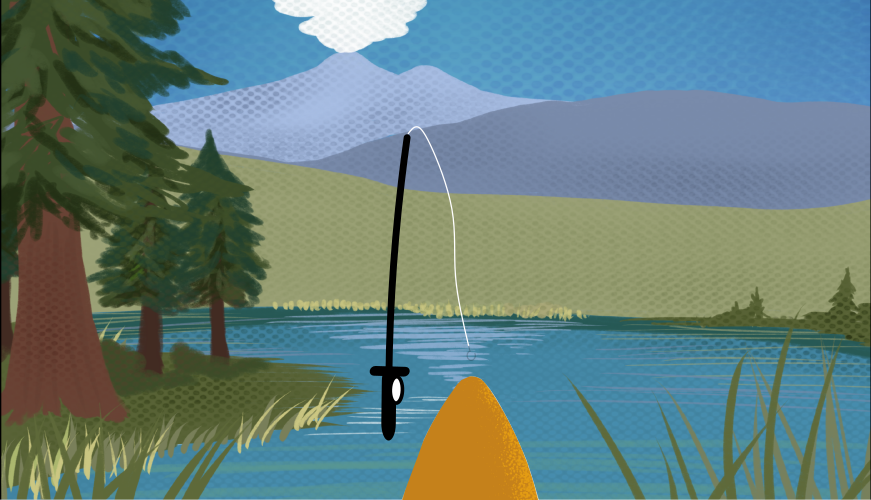From Fish to FossilsThe bottom dwelling fish in Florissant were able to live in the poor conditions of the ancient lake. Diatom mats, or single-celled algae that have dense cell walls easily sank to the bottom of the lake. These microogranisms along with clay, silt, and volcanic ash created alternating layers at the lake bottom. When fish died, their skeletons would sink and become compressed in between the layers.The fish skeletons became preserved or created impressions in the rock. Finer details such as fish scales became carbonized, or turned into carbon in the rock.
NPS Let's catch some fish!Before we begin, read these basic fishing tips:For this activity, you'll be virtually fishing.
Note: the following tips are for when you actually go fishing in-person.

NPS / Karen Ceballos & Astrid Garcia
You notice a small shadow moving below the surface and slowly start to approach your lure. Suddenly, you feel a bite and you start to tug and reel the fish in. Move the slider to the right to see your catch. Move the slider to the left to view the fossilized ancient fish. Read about the fish in the drop-down below. 

Left image
Right image
You turn to see another few shadows lurking beneath the lake's surface. After casting your line, you wait patiently. You begin to feel another tug in the water and you pull and begin reeling the fish in. Move the slider to the left to see your catch. Move the slider to the right to view the fossilized ancient fish. Read about the fish in the drop-down below. 

Left image
Right image
After you're done virtually fishing, select where you want to go next. Where to next? |
Last updated: April 9, 2022
